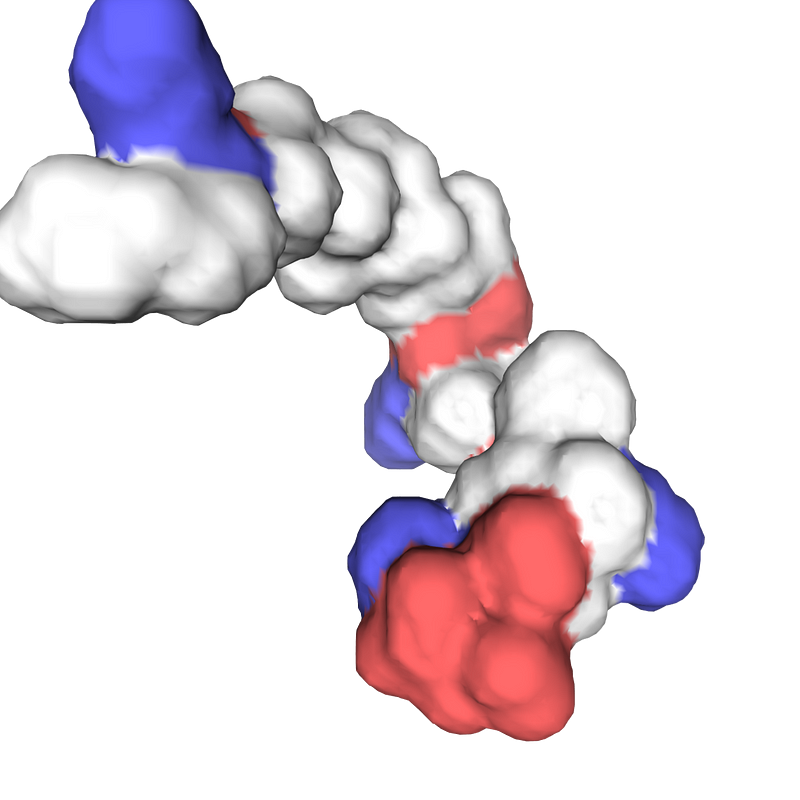Unveiling Tardigrade Resilience: Insights from Computer Modeling
Written on
Chapter 1: The Marvels of Tardigrades
Tardigrades, also known as water bears or moss piglets, are fascinating microscopic creatures measuring about 0.5mm as adults. With approximately 1,300 identified species, these resilient beings thrive in diverse environments, from the frigid Antarctic to the humid tropics.
However, it's their extraordinary durability, rather than their widespread presence, that truly sets them apart. Tardigrades are among the toughest organisms on the planet. They have been found alive in extreme conditions, including frozen layers of ice and scalding hot springs. They can endure radiation levels thousands of times more lethal than what humans can withstand. Not only can they survive in a vacuum (up to ten days in space), but certain species can also tolerate pressures far exceeding those at the bottom of the Mariana Trench.
Despite their small stature, tardigrades possess remarkable abilities. In fact, some scientists propose that even in the event of a catastrophic cosmic disaster, Earth might still host some tardigrades.

Chapter 2: The Science Behind Their Resilience
The secret to their incredible resilience lies in their ability to enter a state called cryptobiosis—essentially a supercharged hibernation. In this state, their metabolic processes slow to nearly nothing, and the water content in their bodies plummets to around 1%. Remarkably, tardigrades can remain in this state for many years, without the need for food or water, and can re-emerge whenever conditions improve.
Another unique feature of tardigrades is a protein known as Dsup, which stands for 'damage suppressor.' This DNA-protective protein allows tardigrades to withstand radiation that would destroy the DNA of other organisms.
The first video provides intriguing insights into the surprising capabilities of tardigrades and the origins of their extraordinary powers.
The Mechanism of Dsup
Despite its known protective properties, the exact mechanism of how Dsup safeguards DNA remained elusive until recently. A new study leverages advanced computer modeling to explore the structure of Dsup and its interaction with DNA.
The analysis involved modeling the complex system of Dsup and DNA, which comprises approximately 750,000 atoms—a task that challenged even the most powerful supercomputers. The findings reveal that Dsup is an intrinsically disordered protein, meaning it lacks a stable three-dimensional structure. This characteristic allows Dsup to adapt its shape to fit the DNA it protects.
Furthermore, researchers discovered that Dsup and DNA have complementary electrostatic properties, which means that the electric fields around these molecules attract rather than repel each other. This attraction plays a crucial role in their interaction.
As articulated in the study, the intrinsic disorder of Dsup, coupled with the strong electrostatic forces between Dsup and DNA, facilitates the formation of flexible complexes where Dsup closely associates with DNA.
The second video showcases the awe-inspiring sight of tardigrades under a microscope, revealing their astonishing details at 1000x magnification.
Future Applications of Dsup
There is potential for harnessing Dsup's properties in human applications. For instance, as we look to enhance astronauts for space travel—potentially using CRISPR technology—Dsup or its human-compatible variant could be beneficial. Closer to home, there are implications for cancer treatment. Current radiation therapies often damage healthy cells indiscriminately. Imagine if targeted delivery of a human-grade Dsup could shield healthy cells during radiation therapy.
Dsup’s powers could pave the way for innovative solutions in medicine and beyond. For further scientific discussions and insights, follow me on Twitter (@evolveon).